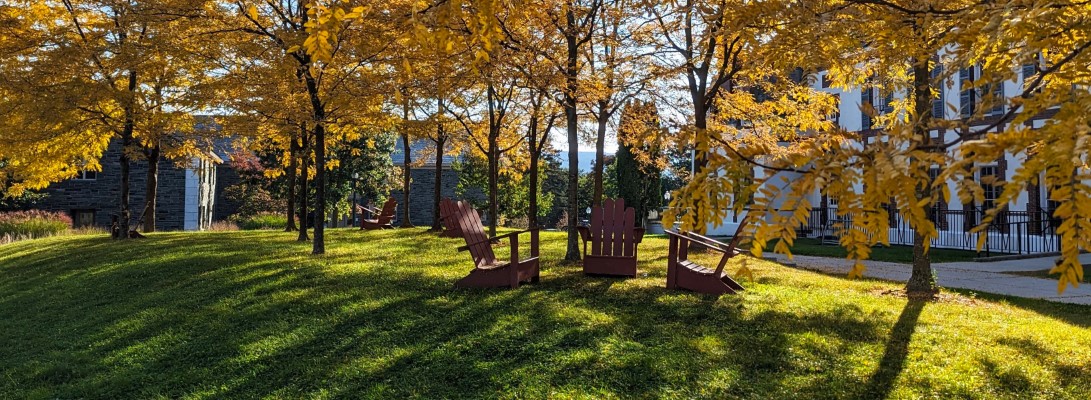Another great spot on campus for annual plantings are the stone pillars at the North end of Old Chapel Road. These structures used to be completely hidden from view by overgrown Yews (Taxus cuspidata), but have since been removed and left as a bed for annuals, accented by two Degroot’s Spire Arborvitae and more Black Eyed Susans.These gates, while in the sun most of the day, seem to be in a fairly dark area of campus, so I prefer to plant bright, hot colors there. This year what grabbed my attention in the greenhouse was more subtle, but still in the warm/hot color spectrum. It all started with Red Sensation Cordyline, a plant I’ve usually used as a focal point in a container. I saw an entire flat of small ones, however, and saw potential as a bedding plant, so I grabbed those and designed the rest of the bed around them.
I used more Supertunia Citrus, I’m enjoying it this year. Nearby is Persian Shield, with the unfortunate Latin name of Strobilanthes dyerianus. This is a great foliage plant, wonderful for containers. Like other annuals I am planting this year, it’s an easy one to walk past in the greenhouse, but in a month or two will be spectacular.
Another upright in the bed is a dark red coleus called Giant Exhibition Palisandra Black. Really more of a dark red, these will get 12-15″ tall, and look great against the stone wall. Older coleus types used to require quite a bit of shade to thrive, but newer cultivars such as this one do well in full sun given sufficent moisture (we use bark mulch to preserve soil moisture). Nearby is another overlooked annual, an Aztec Gold Sanvitalia. Whenever I’ve planted this it has always been one of the more popular plants nobody recognizes. This never ever looks good in the greenhouse, with it’s sporadic blooms, tangly habit, and propensity of being tucked in a little dull corner. Plant it, let it be, and wait until mid-summer when it is covered in little yellow daisy blooms, and you’ll come to appreciate the neglected corners of your neighborhood garden center. Another red, near the supertunias, is a new red Nemesia called Sunsatia Cranberry. Lots of new breeding work in the nemesia family, and I have high hopes for this one.
All the tall reds and purples in the bed needed more golds to play off of it, so I bought a flat of Lemon Licorice Plant. Most familar to people in a silver color, the lemon has a great yellow color to play off of all these reds. This will cover the ground, weedlike, and be very dependable.
The final plant in there is a small dwarf Dahlia called Goldalia Orange. This was the second plant that grabbed my eye in the greenhouse. Dahlias are underrated, and these bedding plant types are much less fussy then the old fashioed large ones you see in the dutch bulb catalogs every year. Although, you can’t really pick them to win awards at Field Days either.
